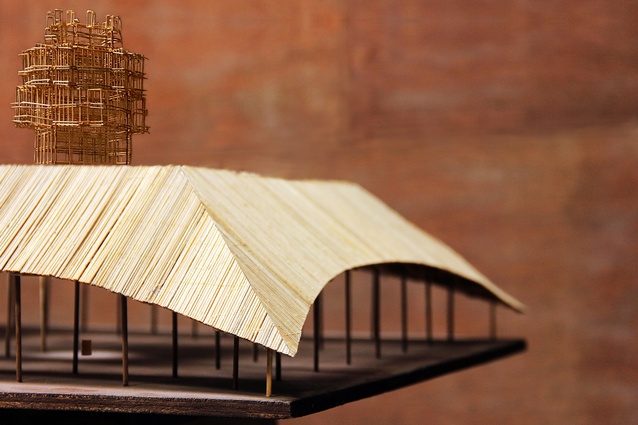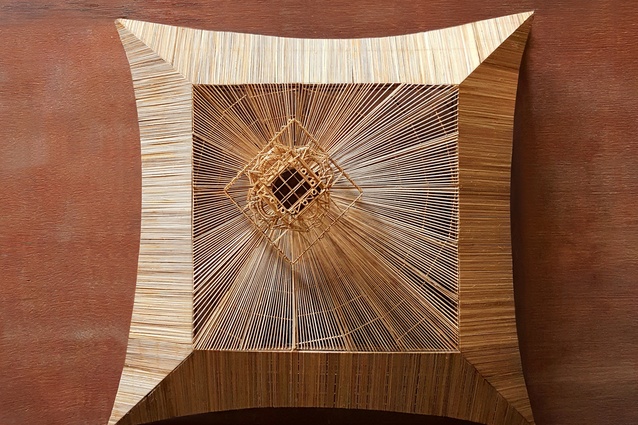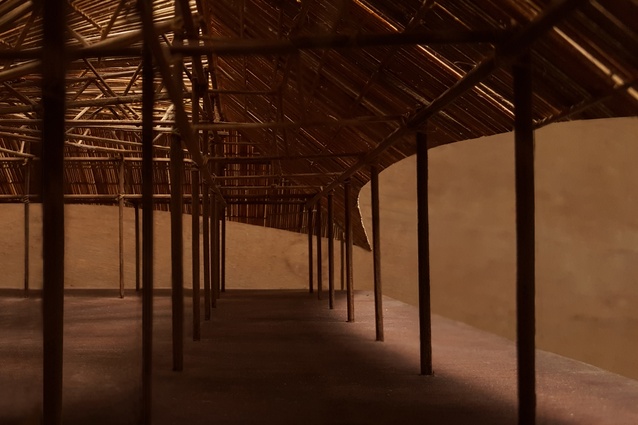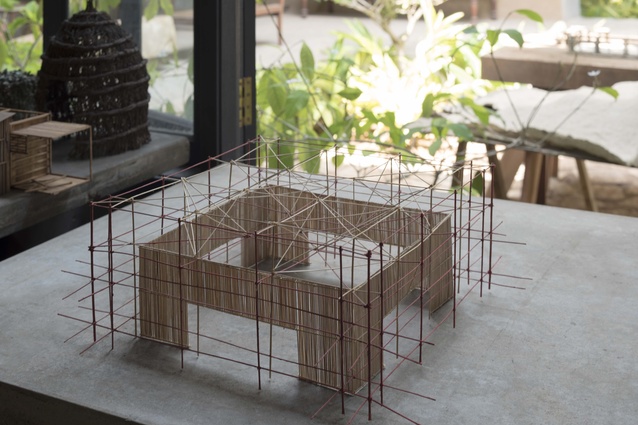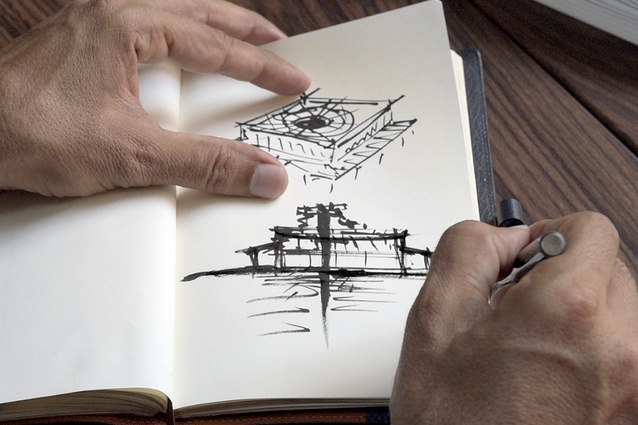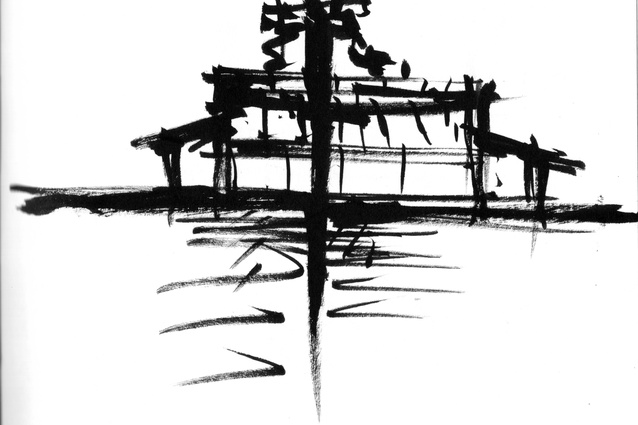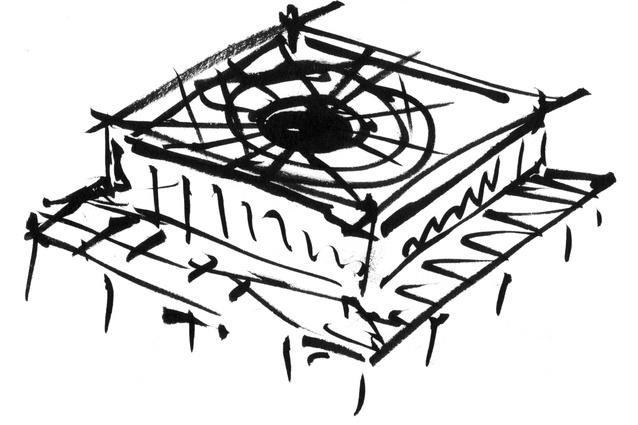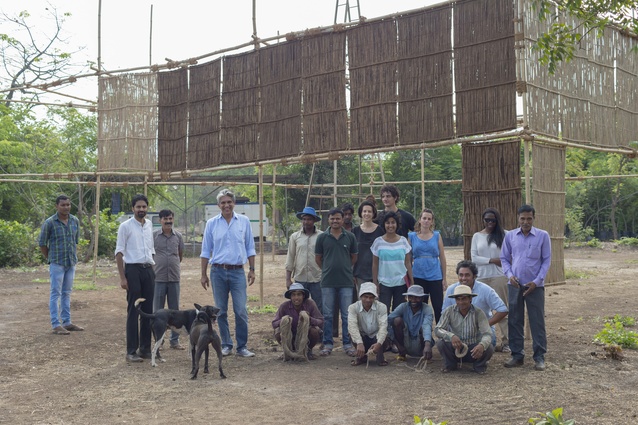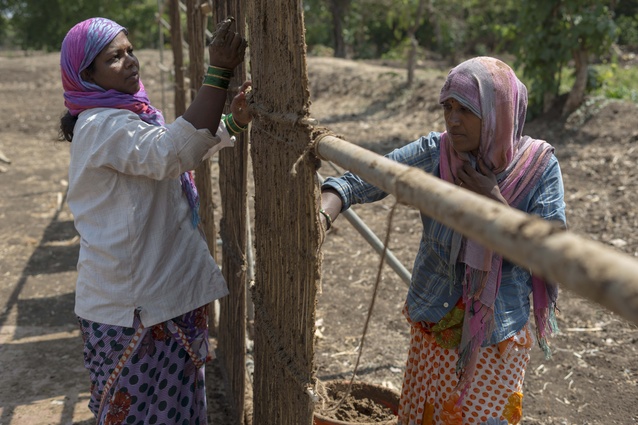2016 MPavilion designs unveiled
Indian architect Bijoy Jain of Studio Mumbai has unveiled the design of his 2016 MPavilion for the Naomi Milgrom Foundation.
The pavilion, which will be built in Melbourne’s Queen Victoria Gardens in October, will exemplify Jain’s interest in the concept of “lore” and traditional, artisanal building techniques. It’s also designed to have an elemental and sensorial quality.
In contrast to last year’s pavilion designed Amanda Levete Architects, which experimented with new materials, Studio Mumbai’s pavilion will be an exploration of handmade architecture and the craft of building.
The pavilion is being billed as the largest bamboo structure ever to be built in Australia. It will be constructed from a series of 2.4-metre-high bamboo columns arranged to form a square pavilion measuring 18 metres on all sides. The columns will be topped with a roof and awning made from karvi panels, which is similar to a wattle and daub type of construction. The roof panels will be made in a traditional Indian technique using bamboo tied together with string and smeared with a mixture of cow dung and earth, which is then covered in a waterproof lime daub.
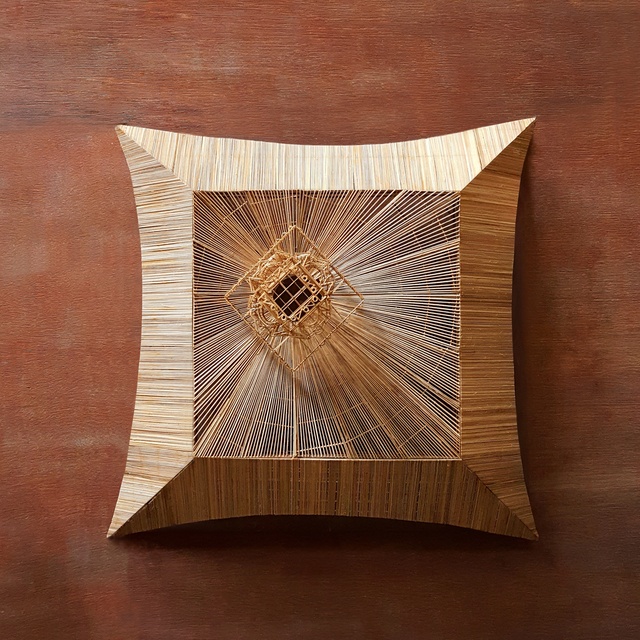
A traditional Indian tazia (ceremonial tower) reaching 12 metres high will sit on top off the roof of the pavilion, positioned off-centre above an oculus in the ceiling.
“The tower or ‘tazia’ is an imaginary building that reaches deep into the stars, so it is otherworldly, and through it you can see the stars, the sky, other dimensions,” Jain said. “I want the MPavilion to be the scaffolding that provides a creative space that suspends visitors between earth, ground and sky.”
Jain and a team of skilled craftsmen in Mumbai have designed and tested the pavilion through a series of models and full-scale prototypes. Australian builders also took part in this collaborative design and construct process. The pavilion will be built in Australia using materials sourced locally and from India.
The 2016 Pavilion is due to open in Melbourne’s Queen Victoria Gardens on 5 October 2016 and will remain until 18 February 2017.
Studio Mumbai’s pavilion is the third in an annual series of pavilions commissioned by the Naomi Milgrom Foundation, inspired by London’s Serpentine Pavilion concept. The first, designed by Australian architect Sean Godsell, was gifted to Melbourne and is now permanently located at the Hellenic Museum. The second pavilion, designed by London-based Amanda Levete Architects, has been permanently relocated to a park in Docklands.

